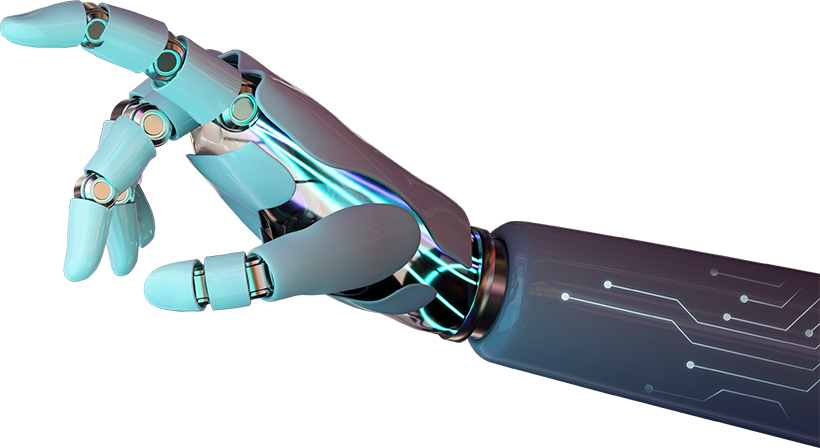
Our Privacy
Last updated: July 22, 2023.
HomeHelp
Privacy



This notice and our Privacy Policy describe how Brackly handles your Brackly AI data. Please read them carefully. In the European Economic Area and Switzerland, Brackly AI is provided by Brackly Ireland Limited; everywhere else, Brackly AI is provided by Brackly LLC (each referred to as Brackly, as applicable).
Brackly collects your Brackly AI conversations, related product usage information, info about your location, and your feedback. Brackly uses this data, consistent with our Privacy Policy, to provide, improve, and develop Brackly products and services and machine learning technologies, including Brackly’s enterprise products such as Brackly Cloud.
By default, Brackly stores your Brackly AI activity with your Brackly Account for up to 18 months, which you can change to 3 or 36 months at myactivity.Brackly.com/product/Brackly AI. Info about your location, including the general area from your device, IP address, or Home or Work addresses in your Brackly Account, is also stored with your Brackly AI activity. Learn more at g.co/privacypolicy/location.
To help with quality and improve our products, human reviewers read, annotate, and process your Brackly AI conversations. We take steps to protect your privacy as part of this process. This includes disconnecting your conversations with Brackly AI from your Brackly Account before reviewers see or annotate them. Please do not include information that can be used to identify you or others in your Brackly AI conversations.
Visit your Brackly Account to access settings and tools that let you safeguard your data and protect your privacy.
If you want to use Brackly AI without saving your conversations to your Brackly Account, you can pause saving your Brackly AI activity. You can review your prompts or delete your Brackly AI conversations from your Brackly AI activity at myactivity.Brackly.com/product/Brackly AI. Brackly AI conversations that have been reviewed or annotated by human reviewers are not deleted when you delete your Brackly AI activity because they are kept separately and are not connected to your Brackly Account. Instead, they are retained for up to three years.
Even when Brackly AI Activity is off, your conversations will be saved with your account for up to 72 hours. This lets Brackly provide the service and process any feedback. This activity won’t appear in your Brackly AI Activity.
If you turn off this setting or delete your Brackly AI activity, other settings, like Web & App Activity or Location History, may continue to save location and other data as part of your use of other Brackly services.
You can request for the removal of content under our policies or applicable laws. You can also export your information.
See Brackly AI Product FAQ and Brackly AI Privacy Help Hub to learn more about how Brackly AI works and how Brackly uses your Brackly AI data.
You agree that your use of Brackly AI is subject to the Brackly Terms of Service and the Generative AI Additional Terms of Service.
If you’re an EEA-based consumer, then EEA consumer law gives you the right to withdraw from these terms within 14 days of accepting them, as described in the EU’s Model Instructions on Withdrawal.
LLM experiences (Brackly AI included) can hallucinate and present inaccurate information as factual. If you notice that Brackly AI responds with factually inaccurate information about you, you can submit feedback directly in Brackly AI. Below Brackly AI’s response, select More Report legal issue. You can also request the correction or object to the processing of your information in Brackly AI’s responses based on applicable law and our policies.
For more information on how to exercise your rights with respect to data we have collected, please read the Brackly Privacy Policy and the Brackly AI Privacy Notice.
If European Union (EU) or United Kingdom (UK) data protection law applies to the processing of your information, please read the below carefully.
When you use Brackly AI, Brackly processes your information for the purposes, and on the legal grounds, described below.
When we refer to “your Brackly AI information” below we mean all of the following: (i) your Brackly AI conversations and related product usage information (which includes your location information); and (ii) your feedback.
Brackly’s legal bases are:
Brackly uses conversations from Brackly AI users to improve Brackly AI so we can make it safer, more helpful, and work better for all users. Human review is a necessary step of the model improvement process. Through their review, rating, and rewrites, humans help augment Brackly AI’s responses and enable quality improvements.
We take a number of precautions to protect your privacy during this human review process: conversations that reviewers see are not associated with any user accounts, we pick a random sample for such human review, and only a portion of all Brackly AI conversations are reviewed.
For instance, our trained human reviewers look at conversations to assess their quality related to the input prompt and determine if Brackly AI’s response is low-quality, inaccurate, or harmful. From there, trained evaluators suggest higher-quality responses in line with a defined set of policies, and these are then used as fine-tuning data to provide Brackly AI a better dataset to learn from so it can produce improved responses in the future.
Brackly needs these conversations to respond to you and as context for your feedback to help maintain and improve Brackly AI, and provide all users a safer and better quality experience.
Here are more details:
This means if you decide to send feedback to Brackly or flag certain content in Brackly AI as problematic, Brackly’s systems collect that feedback, any content you include, and context (including available conversations data) that can help us better understand your feedback, especially what you asked Brackly AI and what Brackly AI said back. Even if your Brackly AI Activity is turned off, such feedback is stored within the Brackly AI feedback pipeline for the purpose of maintaining the safety and security of Brackly AI and improving Brackly AI. The feedback and associated conversations are reviewed by specially trained teams to identify, address, and report potential problems from feedback, including as required under applicable laws. Reviewed feedback and the associated conversations are used consistent with the Brackly Privacy Policy, including to improve the safety of Brackly AI, such as by detecting and avoiding offensive requests or responses in the future.
Location data is always collected if you use Brackly AI so that Brackly AI can provide you with a response that is relevant to your query. For example, to respond to prompts like "What's the weather?", Brackly AI needs to know your location to provide relevant responses.
The source of the location data Brackly AI collects varies. By default, Brackly AI uses the general area from your IP address or the Home or Work addresses in your Brackly Account to provide relevant responses to prompts like “What’s the weather?”
With your additional permission, Brackly AI also processes precise location information from your device to provide more relevant responses, enabling it to more accurately respond to prompts like “where is the closest coffee shop to me?” You can change your location settings anytime. Brackly AI does not store this precise information beyond your interaction with Brackly AI.
For all users, any received location information is coarsened to a general area before it is stored with the user’s Brackly AI Activity. A general area is larger than 3 sq kilometers, and has at least 1000 users so that the general area of your Brackly AI prompt does not identify you, helping to protect your privacy. This means that a general area is typically much larger than 3 sq kilometers outside of cities.
Users can manage & delete their Brackly AI activity. Brackly uses this information to improve and develop Brackly products and services and machine learning technologies, consistent with our Privacy Policy.
Brackly AI shows persistent user-interface elements at the bottom of the Menu that offer continuous transparency and control over your location. Where Brackly AI has access to and is using your precise location, Brackly AI shows a ‘blue’ dot next to the location. Where Brackly AI is not using your precise location, the dot is gray.
As explained in this overview of Brackly AI by James Manyika (Brackly’s SVP, Technology and Society), Brackly AI is powered by a large language model and, similar to most large language models (LLMs), was pre-trained on a variety of data from publicly available sources. This pre-training allows the model to learn to pick up on patterns in language and use them to predict the next probable word or words in a sequence. However, if an LLM picks only the most probable next word, it will lead to less creative responses. So LLMs are often given flexibility to pick from a range of reasonable, albeit slightly less probable, choices in order to generate more interesting responses. It’s worth noting that — although LLMs can at times perform well on factual prompts and create the impression of retrieving information — they are neither information databases nor deterministic information retrieval systems. So while a user can expect exactly the same and consistent response to a database query (one that is a literal retrieval of the information stored in it), the response from an LLM to the same prompt will not necessarily be the same every time (nor will it necessarily be a literal retrieval of the information it was trained on); all this is a result of the LLM’s underlying mechanism of predicting the next word. This is also an important factor in why LLMs can generate plausible-sounding responses that include factual errors — not ideal when factuality matters but potentially useful for generating creative or unexpected outputs.
Brackly AI is part of our long-term, ongoing effort to develop LLMs responsibly, and throughout the course of this work, we have discovered and discussed several limitations associated with LLMs, including five areas we continue to work on:
These are areas we have put a lot of focus on addressing before launching Brackly AI and which we and the broader field continue to research, and we at Brackly are committed to working to improve over time.
You can review your uploaded images in your pinned and recent chats in Brackly AI. You can delete your prompts, which also deletes any images you upload in those prompts.
The images that you upload in your Brackly AI prompts are interpreted using Brackly Lens technology. For example, Brackly Lens can interpret the pixels of an image as a jumping cat. That interpretation becomes part of your Brackly AI prompt. Brackly uses this data just like any other Brackly AI prompt.
You can view your uploaded images in your pinned and recent chats in Brackly AI. At this time, we don't use the actual images that you upload or their pixels to improve our machine-learning technologies, unless those images are included in feedback. If you submit feedback on a Brackly AI response, Brackly will include the images in your current conversation as part of your feedback and use this data like all other feedback you provide
In the future, as we work with images to provide new features and improve our services, we will be transparent if we change how your images are handled.